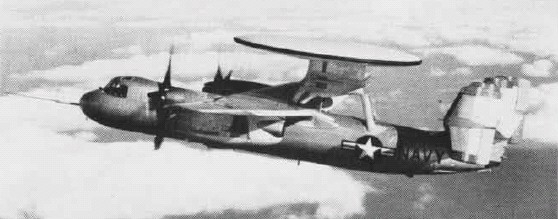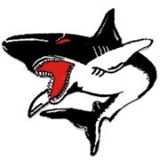Milestones…
As we wrestle with an ISP that seems to have a different sense of urgency than YHS when it comes to transferring service upon shifting our flag, access to the ‘verse will continue to be, well, spotty, over the next few days. What little we are able to accomplish is via the services of our public library, an institution that still figures prominently in the SJS household, bless ’em.
 12 May 2009. USS George H.W. Bush (CVN 77) Accepted by Navy from Shipyard: (NEWPORT NEWS DAILY PRESS 11 MAY 09) … Peter Frost
12 May 2009. USS George H.W. Bush (CVN 77) Accepted by Navy from Shipyard: (NEWPORT NEWS DAILY PRESS 11 MAY 09) … Peter Frost
NAVAL STATION NORFOLK – The U.S. Navy finally has its ship. The service today officially accepted delivery of the George H.W. Bush aircraft carrier from Northrop Grumman Corp., the company and service confirmed.
The $6.26 billion carrier, commissioned on Jan. 10 in Norfolk, is now an official ship of the U.S. Fleet. It is the 10th and final of the Nimitz class, all of which were built in Newport News.
“George H.W. Bush’s delivery completes the construction of Nimitz-class aircraft carriers, but their legacy will continue,” said Capt. Frank Simei, the Navy’s program manager for in-service carriers. “This ship will be an important part of our maritime forces for the next 50 years.”
Its keel was laid in 2003 and it was christened in 2006. The ship is scheduled to return to Newport News in June for short after-delivery maintenance, and make its first deployment in 2010.
And the reason for the delta between commissioning and acceptance?
Navy Accepts Bush After Debris Caused Delay
(NAVY TIMES 11 MAY 09)Â The Navy took delivery of the carrier George H.W. Bush on Monday, more than two weeks after the discovery of debris in the ship’s emergency diesel generators stopped the service from taking final ownership of the $6.26 billion flattop.
Alan Baribeau, a spokesman for Naval Sea Systems Command, did not immediately have information about what kind of work shipbuilder Northrop Grumman had done to resolve the problems with the generators, nor how much it had cost. Inspectors found the problems after the Bush returned from its acceptance trials April 10; the Navy announced April 24 it wouldn’t take delivery of the ship until they were fixed.
The carrier is powered by two nuclear reactors, but it would use its emergency diesel generators for backup power in case the reactors went offline. It is the 10th and final Nimitz-class aircraft carrier, as well as the last U.S. carrier designed from the keel up with steam-powered catapults to launch its aircraft.
 In related news, the axe finally falls on Kitty Hawk:
In related news, the axe finally falls on Kitty Hawk:
Navy Decommissions USS Kitty Hawk
(NAVY COMPASS 12 MAY 09)BREMERTON, Wash.– The aircraft carrier USS Kitty Hawk (CV 63) was decommissioned May 12 at Puget Sound Naval Shipyard & Intermediate Maintenance Facility in Bremerton, Wash., after more than 48 years of service. Members of the final crew lowered the ship’s commissioning pennant from the main mast and the U.S. Flag and First Navy Jack from their staffs after Kitty Hawk Commanding Officer Capt. Todd Zecchin closed out the ship’s deck log. “It’s hard to capture the feeling in words,” said Zecchin. “This is the second aircraft carrier that I’ve decommissioned, and it doesn’t hit you immediately until you’ve lowered the commissioning pennant for the last time.” Kitty Hawk’s officers of the deck have used the log to track shipboard activities, both in port and at sea, since commissioning April 29, 1961. Zecchin then transferred the ship to the control of shipyard commander Capt. Mark Whitney during a small ceremony aboard the ship. “She has served her country for almost 50 years – 48 years and 13 days, across the globe,” said Zecchin. “There have been a lot of Sailors that have crossed her decks, a lot of airmen that have flown off and on her decks.” Kitty Hawk arrived in Bremerton Sept. 2, 2008 to prepare for its eventual decommissioning. The ship spent the previous 10 years operating from Fleet Activities Yokosuka, Japan. Kitty Hawk had been the Navy’s oldest active warship since 1998 and turns over the title to the nuclear-powered aircraft carrier USS Enterprise (CVN 65). Kitty Hawk was also the Navy’s last remaining diesel-fueled aircraft carrier. Throughout its lifetime, Kitty Hawk has had 407,507 arrested carrier landings and 448,235 catapult launches. Now decommissioned, the ship will remain in Bremerton for the foreseeable future as part of the Navy Inactive Ships Program.
Because of a Congressional law, the Navy could not decom Kitty Hawk until it had accepted GHWB to avoid dropping below 11 carriers…
 And the E-2D passes a major milestone of its own:
And the E-2D passes a major milestone of its own:
Northrop Grumman’s E-2D Advanced Hawkeye Completes 1,000th Hour of
Flight Testing; Program On-Track for Operational Evaluation in 2011BETHPAGE, N.Y. – May 13, 2009 – In the blue skies over St. Augustine, Fla., Northrop Grumman’s (NYSE:NOC) E-2D Advanced Hawkeye System Development and Demonstration program aircraft recently reached its 1,000th hour of flight testing. The aircraft, currently in flight testing at Northrop Grumman’s East Coast Manufacturing and Flight Test Center, continues to successfully meet, or exceed, all major program and performance milestones.
“This is a significant milestone for Northrop Grumman and the U.S. Navy, and it is a testament to our company’s continued commitment to strong program performance and to meeting our contractual obligations to our customers,” said Tom Vice, sector vice president of the Battle Management and Engagement Systems Division for the company’s Aerospace Systems sector. “We know the value that the E-2D Advanced Hawkeye will bring to our carrier fleets. It is the next generation of force protection for those in our Navy who lead our global force projection on the open seas.”
Program officials say the joint Advanced Hawkeye team has made great progress since its first flight in August 2007. “This is just one of many milestones we have achieved over the past year and a half and it’s due to the hard work and dedication of the entire team,” said Jim Culmo, Northrop Grumman vice president of Airborne Early Warning and Battle Management Command and Control Programs.
Culmo said the E-2D pilot production continues ahead of schedule on the first three aircraft, and radar long-range detection performance is exceeding expectations. “We are looking forward to the aircraft’s transition to NAS Pax River later this year as we enter the carrier suitability testing phase,” he added.


